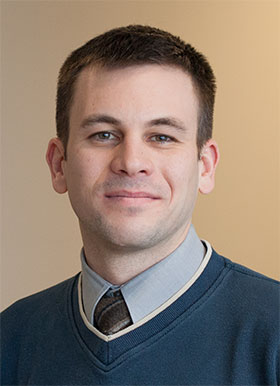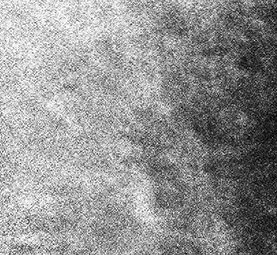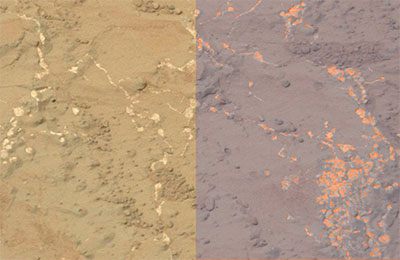Opportunity Calls...from Mars
 Peering at the Moon, looming large and glowing surrounded by a carpet of stars winking at the Earth; watching sci-fi movies, reading books and playing videogames filled with fantastical stories of exploration of the universe, all inspired PhD candidate, Raymond Francis to pursue his dream of space-related research and development, in short, to become a space pioneer.
Peering at the Moon, looming large and glowing surrounded by a carpet of stars winking at the Earth; watching sci-fi movies, reading books and playing videogames filled with fantastical stories of exploration of the universe, all inspired PhD candidate, Raymond Francis to pursue his dream of space-related research and development, in short, to become a space pioneer.
Francis was drawn to Western University’s Centre for Planetary Science and Exploration (CPSX), a multi-disciplinary organization, where more than 50 researchers from 11 different departments and three Faculties have come together to offer a collaborative graduate program serving the largest number of graduate students in the area of Planetary Science in Canada.
In 2010, Francis began his PhD at Western, with co-supervisors, Earth Sciences Professor Dr. Gordon Osinski and Engineering Professor Dr. Ken McIsaac. Francis was particularly sensitive to the fact that many engineers are oblivious to the ways in which the technology they design will be used to meet scientific objectives. Similarly, the graduate student acknowledged that the scientific community is unaware of the process and challenges involved in building technology. The CPSX Graduate Program served to be the perfect bridge between the two different but complimentary worlds of engineering and science, providing Raymond – the robotics expert - opportunities to partake in analogue studies and field work with geologists in some of the most unique environments on the planet, including the Canadian Arctic where he was among the first to study an impact crater that had never been explored before. And, it equipped Francis with the competencies and networks that would lead to the fulfillment of a boyhood dream – to work on a planetary space mission for NASA.
 The long-awaited invitation was issued as a result of a post-doctoral project proposal focusing on topics in atmospheric and environmental science. Understanding the atmospheric phenomena on Mars may contribute to a greater understanding of Martian habitability and could help humanity answer the age-old question, “Has life ever existed on Mars?” Dr. John Moores, at the time a CPSX Post-Doctoral Fellow, enlisted Raymond to design a computer program to establish an autonomous image capture capability for clouds in the Red planet’s atmosphere. Francis had been working on the same type of program/algorithm as a part of his Doctoral project research to be applied to a completely different context - rocks on Earth. The opportunity to extend his skills and knowledge and apply them to an active Martian mission was exactly what Francis had hoped for when he joined the CPSX team!
The long-awaited invitation was issued as a result of a post-doctoral project proposal focusing on topics in atmospheric and environmental science. Understanding the atmospheric phenomena on Mars may contribute to a greater understanding of Martian habitability and could help humanity answer the age-old question, “Has life ever existed on Mars?” Dr. John Moores, at the time a CPSX Post-Doctoral Fellow, enlisted Raymond to design a computer program to establish an autonomous image capture capability for clouds in the Red planet’s atmosphere. Francis had been working on the same type of program/algorithm as a part of his Doctoral project research to be applied to a completely different context - rocks on Earth. The opportunity to extend his skills and knowledge and apply them to an active Martian mission was exactly what Francis had hoped for when he joined the CPSX team!
Raymond spent 90 Martian days working at NASA’s Jet Propulsion Lab debating which images to capture the next day to further the community’s atmospheric studies. Dubbed “the atmospheric guy,” Francis was put to the test as his scientist-colleagues were more than interested to hear his ideas. Being an integral part of the science team, Raymond worked with data to which he normally would not have had access. He returned to Western thereafter and managed the imaging project remotely, leveraging the university’s cutting edge facilities and software necessary to prepare a daily imaging plan for the Mars Rover. Francis can’t believe that the storybook pictures of his youth have evolved into the images of Martian clouds that the global community will use to answer profound question about life on another planet.
 Currently, Francis is tweaking his PhD project rock algorithm to determine how to differentiate rock outcrops and rock from dust, the purpose being to be able to quantify dust cover, creating another innovative approach to contribute to effective exploration on Earth and in space.
Currently, Francis is tweaking his PhD project rock algorithm to determine how to differentiate rock outcrops and rock from dust, the purpose being to be able to quantify dust cover, creating another innovative approach to contribute to effective exploration on Earth and in space.
Raymond Francis plans to graduate this spring but will continue to support the current Martian mission. With so much drive, creativity, potential and now – experience - this is undoubtedly not the last time we will attribute innovation and achievement with Raymond Francis.

